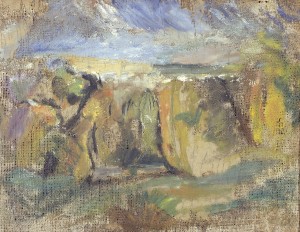There cannot be self-evident facts in this artistic culture. Art is more than a profession, it is not a given. It is not bound by the corporate ethic, is not sociomorphic or rooted in the socio-political structure; nothing ensures it, it is not guaranteed; it is nothing, unknown and so it can be secret. It is so concerned with humanity that it is unquestionably opposed to all systems of human oppression, subjugation, exploitation and defraudation. This art is a search for something that is not manifest in reality, that is conceived of as a clarification and structuring of life, that is, something that is conceived of as “art.” It does not imply any sort of social adaptation™; in its time art retains a sense of allegory, it is a search for otherness, for the “other.” At the same time, it is a hope for understanding because it emerges from the thesis that “I see things as they truly are; I speak the truth.”
Way of Painting’s second exhibition in Russia but actually their third and final exhibition was held in 1930 at the Academics’ House (Dom Uchyonykh) in Moscow. It was to be the last in the life of the still-youthful Koroteev (that is, of course, not counting is participation in the exhibition of Production and Technical Workshop artists at the All-Union Agricultural Exhibition [VSKhV] in 1958). In 1930 Koroteev was only 24 years old. His paintings were never again exhibited. But he would work thoughtfully, responsibly and devotedly for his entire life. He lacked viewers and companions, but he worked methodically and persistently as if preparing for a large and very important exhibition taking place tomorrow. We are talking, of course, about internal, personal preparation; as far as canvases and paintings are concerned, he made them and left them behind: he needed to move on.
His works create a light, unpolished, haphazard impression and convey a sense of the spontaneity of the artist’s movements. At the same time, each of Koroteev’s works is the result of enormous internal concentration and focus. This artist could become engrossed in his work to the point of being withdrawn and aloof, and a somewhat amusing incident that happened to him soon after World War II enables one to imagine how he might have looked in the eyes of lookers-on.
In the late forties and early fifties he often travelled to Domodedovo, outside Moscow, where his sister-in-law lived. He would come for a day, or a few, stay at her house and go to the forest, to walk and, more often, to work. He would choose a site, set up his painter’s case, stand before it and wouldn’t simply begin to paint but rather would tune into his work like a sensitive radio receiver; he entered what could be termed altered states: he listened to himself, to how the external conditions of place and time resounded and were echoed within him; he opened himself up and went to something that had taken shape within him or for him; and the landscape was revealed not only to his eyes, not only to his ability to observe and see, but also to his ability to empathize, to feel what was taking place as an event or occurrence of great importance.



